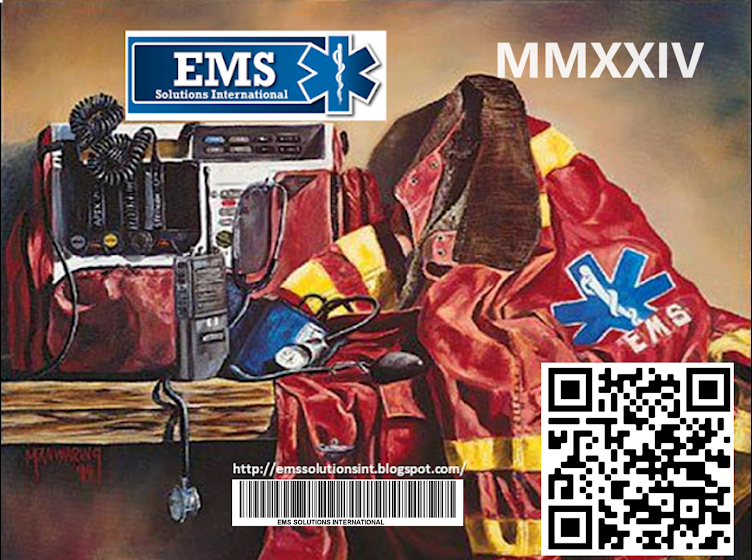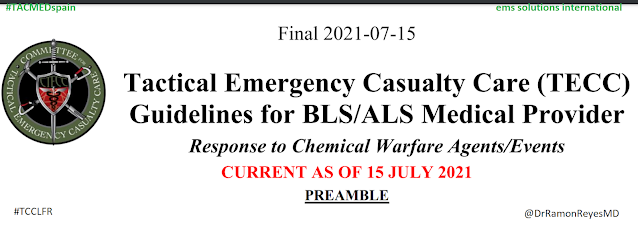Uno de los desafíos en el manejo de víctimas envenenadas con agentes de guerra química es la identificación del agente causal. Por ejemplo, el tratamiento de una víctima de cianuro con atropina y oximas no mejorará en absoluto su nivel de asfixia celular.
 |
| ∗ Pinpoint pupils (or increased secretions) may be delayed if skin absorption or eye protection worn. †‘Biosyndromes’ include: respiratory, cutaneous (skin), lymphadenopathy, haemorrhagic, gastrointestinal and neurological (central and peripheral). 2016 Criteria for Sepsis: 2 of 3 – altered conscious level; ventilatory frequency ≥ 22; or systolic blood pressure < 100 mmHg with or without non-blanching rash (additional NATO criterion) [see AmedP-7.1 Part 4]. Consider SEPTIC SHOCK if systolic pressure < 90 mmHg or no radial pulse. |
La OTAN usa un modelo llamado "CRESS" que proviene de expertos en toxicología / QBRN en las SOF del Reino Unido. Al igual que los toxicromes médicos de emergencia tradicionales, ayuda a identificar los signos que tiene una víctima para sugerir una exposición a un agente específico y, por lo tanto, un tratamiento. Se creó específicamente con la posibilidad de que la víctima lleve equipo de protección química y esté enmascarada, por lo que se centra en los signos que aún podrían ser evaluables en ese entorno. Las víctimas son evaluadas por su conciencia, respiración, ojos/pupilas, secreciones y apariencia de la piel.
One of the challenges in management of chemical warfare agent poisoned casualties is identification of the causative agent. For example, treatment of a cyanide casualty with atropine and oximes won't improve their cellular level asphyxiation at all.
NATO uses a model called "CRESS" which came from toxicology / CBRN experts in UK SOF. Like the traditional emergency medical toxidromes, it helps to identify the signs a casualty has to suggest a specific agent exposure and thus treatment. It was specifically created with the possibility that the casualty may be in chemical protective gear and masked so focuses on signs that might still be evaluable in that setting. Casualties are evaluated for their Consciousness, Respirations, Eye / pupils, Secretions, and Skin appearance.
#TECC #TCCC#hazmat #CBRN #TCBRN
#HazardousMaterialUnit
#tacticalmedic #NFPA #firehazmat
#handsonhazmat #hazmat #cbrne
#hazmatteam #hazmattech #hazmatspecialist
#FireFighter #EMS
#Rescue
#crisismedtraining
Project on
Minimum Standards and Non-Binding Guidelines
for First Responders Regarding
Planning, Training, Procedure and Equipment
for Chemical, Biological, Radiological
and Nuclear (CBRN) Incidents
GUIDELINES FOR FIRST RESPONDERS
TO A CBRN INCIDENT
https://emssolutionsint.blogspot.com/2022/12/project-on-minimum-standards-and-non.html
#TECC #TCCC#hazmat #CBRN #TCBRN
#UnidaddeMaterialPeligroso
#tacticalmedic #NFPA #firehazmat
#handsonhazmat #hazmat #cbrne
#hazmatteam #hazmattech #hazmatspecialist
#Bombero #EMS
#Rescate




















































